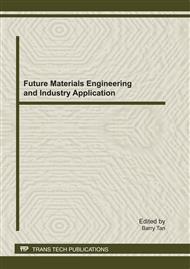p.135
p.140
p.145
p.150
p.155
p.160
p.169
p.180
p.187
Study on Treatment Technology of Mature Landfill Leachate
Abstract:
An energy saving processes was developed on the treatment of mature landfill leachate. The process adopted biochemical and physicochemical process to deal with COD and NH3-N which were the main pollutant indexes according to the characteristics of mature landfill. The experimental wastewater was from leachate pond of Anshan Yang’eryu landfill. The principle and course of simultaneous nitrogen removal and degradation of organic pollutants were elucidated. For the treated landfill leachate by the process, COD and TN removal rates reached over 95% and 65%, respectively, reaching the first class standard of “Sewage Comprehensive Discharging Standard”(GB8978-1996) for china.
Info:
Periodical:
Pages:
155-159
Citation:
Online since:
October 2011
Authors:
Keywords:
Price:
Сopyright:
© 2012 Trans Tech Publications Ltd. All Rights Reserved
Share:
Citation:


